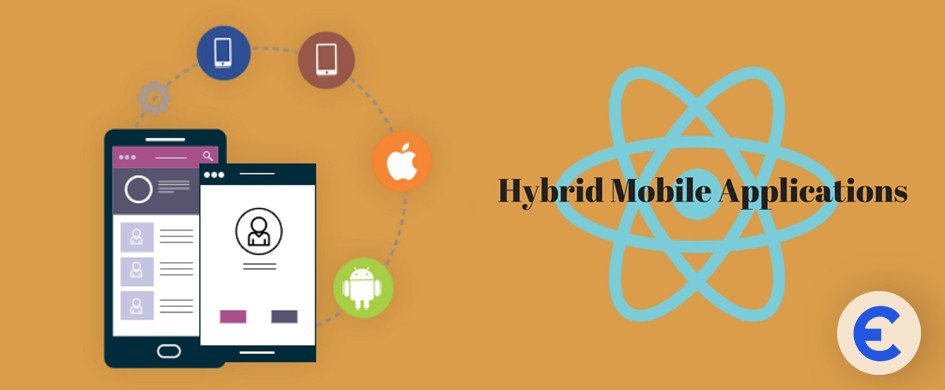Finding the right talent for your projects can be challenging. Two popular approaches are traditional hiring and staff leasing, but which one is better for your needs? Each method has its pros and cons, and understanding the differences can help you make the best choice for your business.
In this blog post, we’ll explore what staff leasing is, how it works, and how it compares to traditional hiring. We’ll also discuss the benefits and challenges of both approaches and provide practical tips to help you decide which one is right for your tech projects.
What is Staff Leasing and How Does It Work?
Staff leasing, also known as employee leasing or staff augmentation, involves hiring a third-party company to provide skilled workers for your business. These workers remain employed by the leasing agency, but they work exclusively for you as long as you need them. Staff leasing is widely used in tech projects, where flexibility, speed, and specialized skills are often critical.
When you engage in staff leasing, the leasing agency handles administrative tasks like payroll, benefits, and legal compliance. You simply focus on managing the project and ensuring that the leased staff integrates smoothly into your team.
How Staff Leasing Works
Staff augmentation is a flexible outsourcing strategy where a company hires external talent to temporarily fill specific roles or gaps in its workforce. Unlike traditional outsourcing, where entire projects are handed over to external vendors, staff augmentation allows businesses to add skilled professionals to their in-house teams on a short- or long-term basis. Here's how the process works:
1. Identifying the Need
The company first identifies the skill gaps or manpower shortage within its team. Whether it's for a new project, an ongoing one, or to cover an unexpected vacancy, the specific roles and expertise required are clearly outlined.
2. Selecting the Right Augmentation Partner
Companies typically work with a staff augmentation agency or a vendor specializing in providing the needed talent. It's essential to partner with an agency that understands the industry and can supply professionals with the necessary technical or domain expertise.
3. Talent Sourcing and Recruitment
The staff augmentation vendor sources candidates from their talent pool or recruits professionals based on the company's requirements. These candidates are vetted, interviewed, and shortlisted to ensure their skills match the project's needs.
4. Onboarding and Integration
Once the right candidates are selected, they are onboarded into the company's existing teams. The augmented staff work alongside the in-house team, following the company's guidelines and processes, much like regular employees. The key difference is that they remain on the payroll of the staffing agency or vendor.
5. Project Execution
The augmented staff contribute to the project under the direct supervision of the company’s project managers. They work as part of the in-house team, maintaining communication, collaboration, and coordination with regular employees to ensure smooth project delivery.
6. Scaling Up or Down
One of the key advantages of staff augmentation is the flexibility to scale the team as needed. If the project scope expands, more professionals can be added. Conversely, if the workload decreases, the company can reduce the augmented workforce without the complications of traditional hiring or layoffs.
7. Completion and Transition
Once the project is completed or the need for additional staff has ended, the augmented team members either return to the agency or, in some cases, the company may offer full-time positions to top-performing individuals.
Benefits of Staff Leasing
- Flexibility: Staff leasing allows you to scale your workforce up or down based on project needs. You can hire highly skilled workers for short-term or long-term projects without the commitments of full-time employment.
- Cost-Efficiency: Since the leasing agency handles administrative tasks such as payroll, insurance, and compliance, it can save you a significant amount of time and money.
- Access to Specialized Talent: Many tech projects require niche skills, and staff leasing agencies often have a broad network of specialized professionals ready to jump in when needed.
- Quick Turnaround: In the fast-paced tech industry, project timelines are critical. Leasing agencies can provide skilled workers quickly, helping you meet tight deadlines.
- Reduced Risk: The leasing company handles legal and regulatory compliance, reducing your exposure to labor-related risks such as wrongful termination claims or misclassification issues.
Challenges in Staff Augmentation
- Limited Control: While you manage the day-to-day tasks, the leased employees technically work for the leasing agency. This means that you have less direct control over their employment terms and long-term retention.
- Integration Issues: Staff leasing involves bringing in workers who are external to your company culture. Integrating these workers into your team may take time and effort, particularly for long-term projects.
- Confidentiality Concerns: Some businesses may worry about sharing sensitive information with leased staff, especially in highly competitive industries.
What is Traditional Hiring?
Traditional hiring refers to the process of recruiting, interviewing, and employing staff directly for your company. The hired employees become part of your permanent workforce, and you are responsible for their wages, benefits, and compliance with labor laws. In tech, this is often the go-to model for filling long-term positions or building a stable team for ongoing projects.
Traditional Hiring Process:
- Job Posting: You post a job description and solicit applications.
- Recruitment: You review applications, interview candidates, and choose the right fit.
- Onboarding: Once hired, the employee goes through orientation and training.
- Long-Term Employment: The employee becomes part of your company’s permanent staff and takes on regular duties.
Benefits of Traditional Hiring
- Full Control: When you hire someone traditionally, you have full control over their role, responsibilities, and career development. This allows for better alignment with company values and long-term goals.
- Cultural Fit: Permanent employees often develop a stronger connection to your company’s culture, which can lead to better team cohesion and long-term productivity.
- Career Development: Traditional employees may have more opportunities for career growth and advancement, increasing their loyalty and long-term commitment to your company.
- Consistency: Hiring staff traditionally can lead to greater consistency in work output, as employees tend to have a longer tenure and deeper involvement in ongoing projects.
Cons of Traditional Hiring
- Higher Costs: Full-time employees come with additional expenses such as salaries, benefits, insurance, and retirement plans. Traditional hiring can be costly, especially for highly skilled tech workers.
- Time-Consuming: Recruiting and onboarding new employees is a lengthy process that can slow down your project timelines.
- Lack of Flexibility: Once you hire someone permanently, it can be challenging to scale back if your needs change. You may end up with more employees than you need, or with skill gaps during slow periods.
- Retention Challenges: The competitive tech industry often faces high turnover rates. Losing a key employee can be costly and disruptive to your projects.
Staff Leasing vs Traditional Hiring: Key Differences
Choosing between staff leasing and traditional hiring is a strategic decision for businesses. Each model has its own set of advantages and challenges, and the choice often depends on the company’s needs, resources, and long-term goals. Let’s look at the key differences between staff leasing and traditional hiring:
1. Cost Structure
- Staff Leasing: With staff leasing, businesses only pay for the services provided by the leased employees, including their salaries and benefits, which are typically managed by the leasing agency. This model often results in lower upfront costs since companies don't need to invest in recruitment, onboarding, or long-term employment benefits like health insurance and retirement plans.
- Traditional Hiring: Traditional hiring involves full-time employees who are directly employed by the company. Employers are responsible for all aspects of compensation, including salaries, health benefits, bonuses, and long-term financial commitments such as retirement or pension plans. Recruitment and training also add to the overall cost.
2. Time to Onboard and Flexibility
- Staff Leasing: Staff leasing provides businesses with quick access to skilled professionals, allowing for rapid onboarding. Since these employees are already pre-screened and vetted by the leasing agency, they can be integrated into teams with minimal delays. Additionally, staff leasing offers greater flexibility as companies can scale their workforce up or down depending on project needs.
- Traditional Hiring: Traditional hiring is a time-consuming process. It involves multiple rounds of interviews, background checks, and onboarding, all of which take time and resources. Once hired, employees are permanent fixtures within the company, which can make scaling up or down more difficult.
3. Employee Management
- Staff Leasing: Leased employees remain on the payroll of the leasing agency, meaning HR-related tasks like payroll management, tax deductions, and employee benefits are handled by the third-party provider. The client company focuses on project management and task delegation without worrying about administrative responsibilities.
- Traditional Hiring: In traditional hiring, all management responsibilities fall on the company. This includes payroll, employee benefits, performance evaluations, and other HR tasks. The company takes full ownership of managing both the professional and personal development of the employee.
4. Control Over Workforce
- Staff Leasing: While companies can manage the daily tasks and responsibilities of leased employees, certain administrative decisions, such as termination or benefits, are controlled by the leasing agency. This can limit the company's overall control over employment matters.
- Traditional Hiring: Traditional hiring allows for full control over the workforce. The company manages every aspect of the employee-employer relationship, from hiring to task delegation to employment termination. This direct management provides a more tailored approach but also requires more resources.
5. Long-Term Commitment
- Staff Leasing: Staff leasing is ideal for short-term projects or fluctuating workloads. It allows businesses to bring in temporary employees for specific tasks without long-term commitments. Once the project is completed, the leased employees return to the agency.
- Traditional Hiring: Traditional hiring is a long-term investment. Employees are generally hired for indefinite periods and are expected to grow with the company. This can be beneficial for building a stable, long-term team but comes with added financial and administrative commitments.
6. Talent Acquisition
- Staff Leasing: The leasing agency is responsible for sourcing talent based on the client’s needs. This gives businesses access to a wide talent pool without the complexities of the traditional recruitment process. However, the selection may be limited to the agency’s existing talent network.
- Traditional Hiring: Companies directly manage the recruitment process, allowing them to actively seek out and hire top talent that perfectly fits their company culture and needs. This method can yield a better talent fit in the long run but requires more time and resources to execute.
7. Risk and Liability
- Staff Leasing: Since leased employees are technically employed by the leasing agency, many of the legal liabilities and risks (e.g., worker compensation, labor law compliance) are assumed by the agency. This reduces the risk exposure for the client company.
- Traditional Hiring: The company is responsible for all liabilities related to full-time employees, including legal and compliance risks. Any issues related to employment law, worker compensation, or layoffs are fully managed by the employer.
8. Scalability and Agility
- Staff Leasing: One of the major advantages of staff leasing is its scalability. Companies can quickly add or remove staff based on project demands or seasonal requirements without affecting their permanent workforce.
- Traditional Hiring: Traditional hiring is less scalable and less agile. Adjusting the workforce is a slower process due to recruitment times, training, and employee contracts. This makes it harder to react quickly to changes in workload.
How to Decide if Staff Leasing is Good for You?
Consider the following when deciding if staff leasing is right for your business:
- Project Duration: If you need specialized skills for a short-term project, staff leasing may be more cost-effective.
- Budget: If you’re trying to reduce overhead costs, leasing might be the better option, as it reduces the administrative burden.
- Need for Flexibility: Staff leasing provides the flexibility to scale your workforce according to project needs.
- Speed to Market: If your project needs to start immediately, leasing staff can get you the talent you need faster than traditional hiring.
Tips to Find the Best Staff Leasing Agency for Your Needs
- Industry Expertise: Choose an agency with experience in your specific industry, especially if you require niche skills like app development or web design.
- Talent Pool: Ensure the agency has access to a large and diverse pool of talent so you can find the right fit for your project.
- Client Reviews: Look for agencies with positive reviews and testimonials from businesses similar to yours.
- Communication: The agency should provide clear, timely communication and support throughout the leasing process.
- Scalability: Choose an agency that can scale its services to meet your growing needs as your business expands.
Bottom Line
Both staff leasing and traditional hiring have their advantages and challenges. If you need flexibility, cost savings, and quick access to talent, staff leasing might be the ideal choice for your tech projects. On the other hand, if you’re looking to build a long-term team with a strong cultural fit, traditional hiring could be a better option. Evaluate your business needs, budget, and project scope to determine the best solution for your company.
Whichever route you choose, make sure it aligns with your long-term goals and the specific needs of your tech projects.



